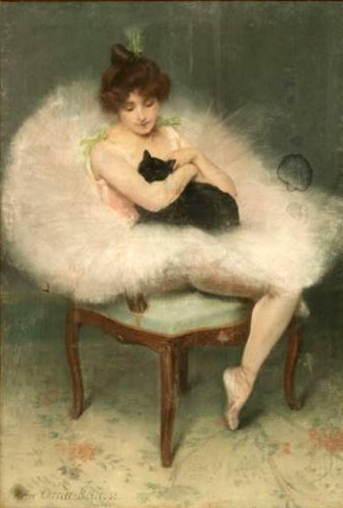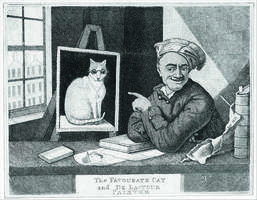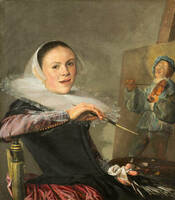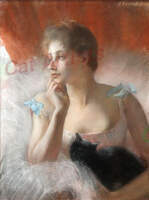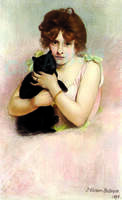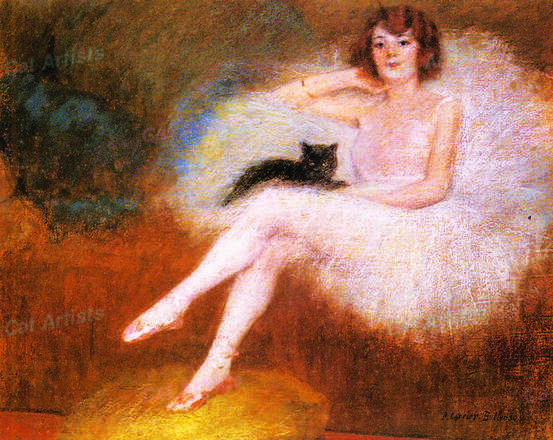
Ballerinas and Black Cats by Pierre Carrier-Belleuse
Ballerine avec un chat Pierre Carrier Belleuse jigsaw puzzle
Ballerine_avec un chat Pierre Carrier Belleuse card
Ballerine_avec un chat Pierre Carrier Belleuse holiday postcard
Young ballerina holding black cat Pierre Carrier Belleuse card
Young woman holding black cat Pierre carrier Belleuse jigsaw puzzle
Young woman holding black cat by Pierre Carrier Belleuse holiday postcard
When people think of ballerina paintings, they often envision Edgar Degas' ballet scenes. Around the same time, another artist in Paris was painting ballerinas in a very different style. Like Degas, Pierre Carrier- Belleuse ((1851-1932) was from a wealthy Parisian family. Both artists preferred working with pastels and both considered themselves realists.
Ballerina Models
Because of the physical strength and stamina necessary to become a ballerina, dancers were excellent models for long poses. At the time, the children and young women in the ballet classes were usually from families struggling economically. A child from a wealthy family wouldn’t be as likely to become a ballerina. The clothing ballet dances wore was considered too revealing. At this time, the ballet as an art form wasn't as respected (or respectable) as it is today.
As it was, the young ballerinas were vulnerable to the power of the wealthy men who prowled the backstage. The men might help their careers so they could earn more or even give them money directly. The ballerinas' families were desperate for financial help.
Degas didn't idealize the dancers' situation: he painted the ballerinas bored, physically exhausted from endless practice six days a week, and shadowed by sinister-looking wealthy men. Degas portrayed his subjects as isolated figures with indistinct faces, often shown under harsh artificial light. Innovative as his style was, his loose strokes of color were in part due to his progressive eye disease that left him barely able to see by the time he was in his fifties.
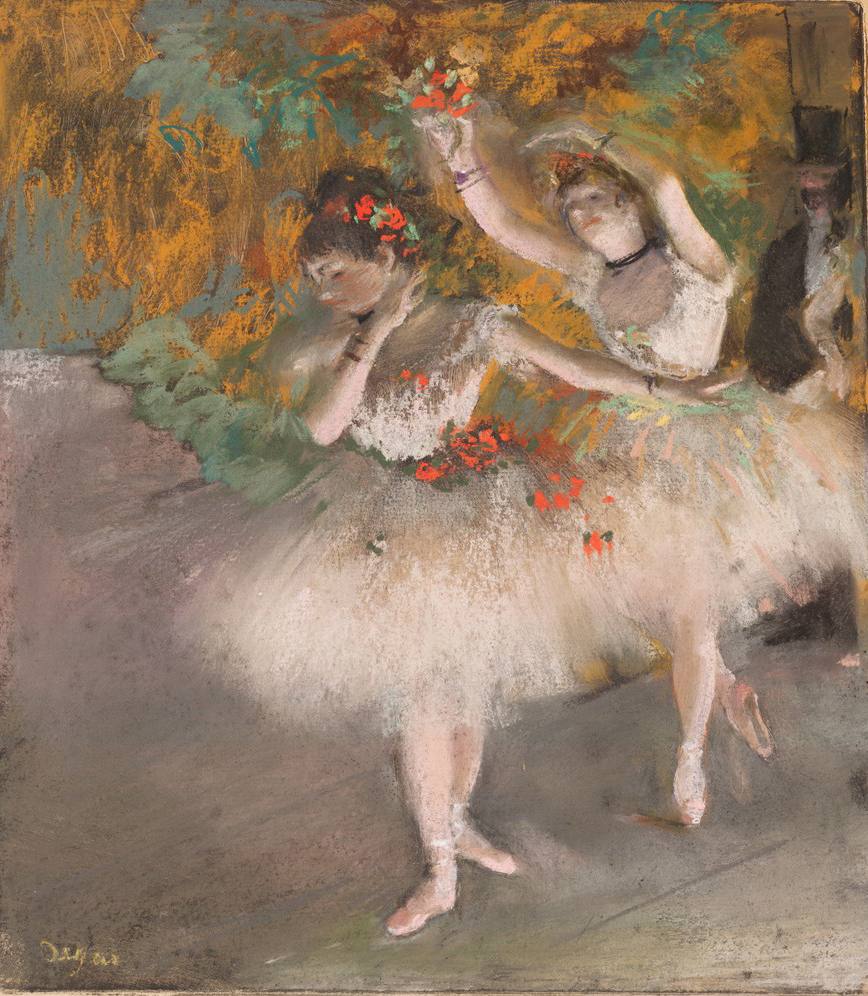
As Degas vision began to fade in his fifties, Pierre Carrier-Belleuse was entering his prime. Carrier-Belleuse came from a well-established artist family . Although his better-known pieces were painted in oil, for Carrier-Belleuse pastels were the perfect medium to describe filmy veils and tutus.
Idealized Beauty
Even if the sitters'' identities are unknown, Carrier-Belleuse's ballerinas are portraits of recognizably distinct people. He may have considered himself a realist, but his ballerinas are tinged with the ideal. Some paintings feel overly sentimental. Sometimes he posed his subjects in such stylized positions that they look awkward. But you can tell the painter held a reverence for female beauty. He wanted to show these ballerinas at what he considered their feminine best.
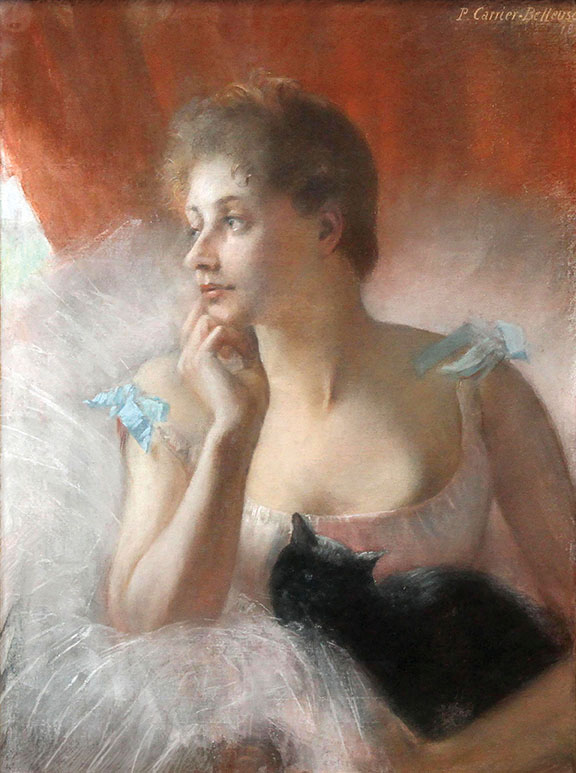
Between 1891 and 1897, he painted four known pastels of ballerinas holding black cats. Although the dancers are dressed in their stage clothing, they are at rest. They must be relaxed for a cat to look so comfortable in their arms.
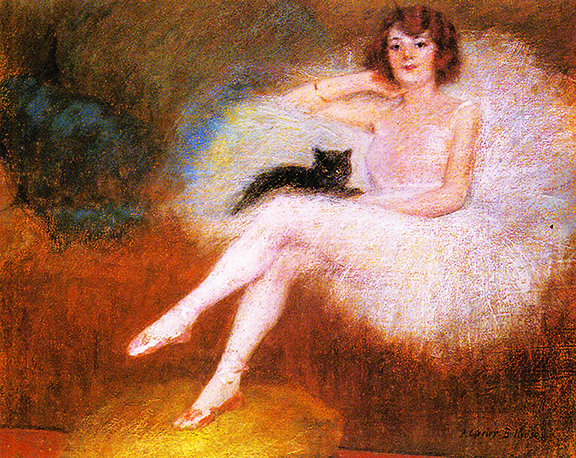
As you look at these paintings, do you wonder if they are all of the same black cat? Maybe it was a working cat who kept the studio free of mice. But the black cat must have also been a pet to be so comfortable around humans to climb onto a tulle skirt.
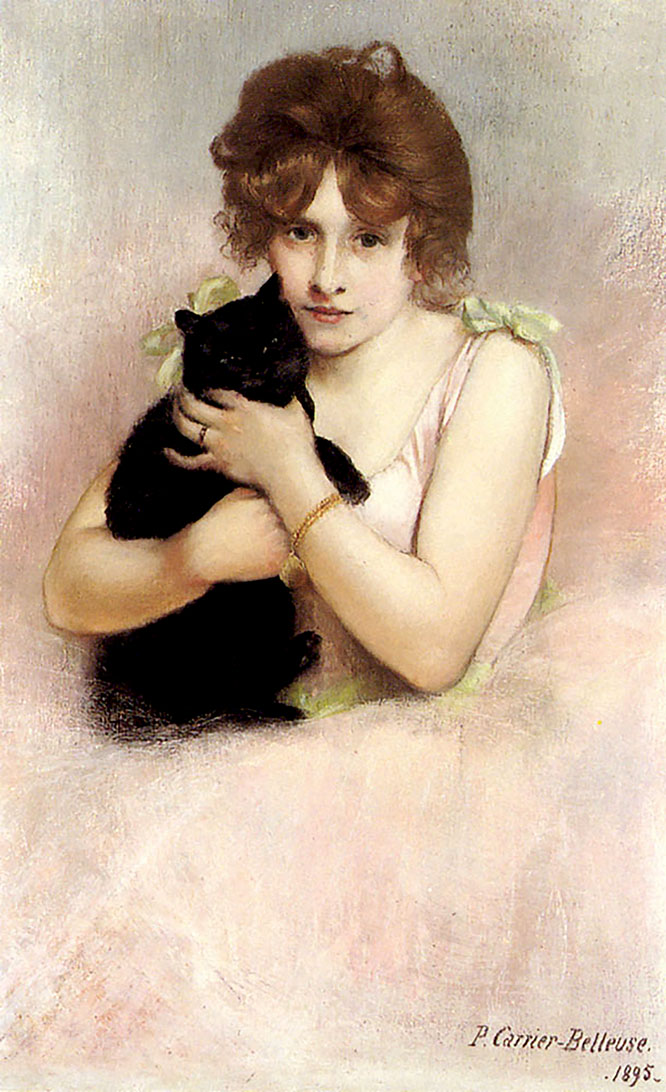
Delicate Pastel Paintings
Chalk pastel (versus oil pastel) is a fragile medium. Brushing against a painting accidentally can smudge the pastel. Pastels are usually matted to give a good distance between the chalk and the glass. A pastel should never be framed under plexiglass or other plastic because of the possibility of static electricity building up and pulling the chalk from the painting surface. Dropping a framed piece or knocking against it may cause the pastel to loosen and fall as dust. Humidity is a concern as well: it's best to hang a pastel out of direct sunlight and on an inside wall… and never in a kitchen or bathroom. Any water on a finished painting could potentially displace the pastel and leave a large water stain.
